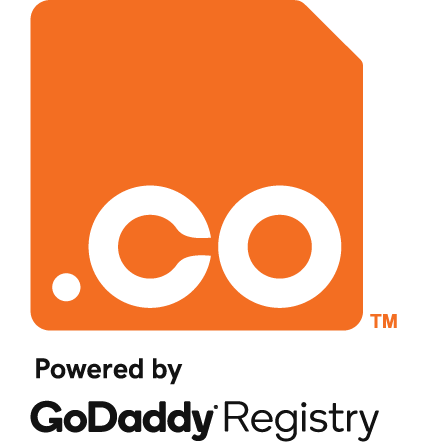Hi there, .CO friends! Welcome to another installment of our SEO in a Week blog post series! Your long-term success is very important to us, so we’ve sought out to arm you with all kinds of helpful SEO tips you can apply to your website in order to improve your SEO. If you’re just joining us, be sure to take a look at our previous posts on SEO-friendly design and development and link building.
Today, we’ll be discussing On Site SEO. You’ll learn what it is, why it’s important, and all about how to address every element on your site.
Without any further delay, let’s jump right in!
What is On Site SEO?
The term On Site SEO, also called On Page SEO, applies to a group of elements on a particular webpage that add to the overall optimization of that page. These elements can also encompass components such as ease of use and overall relevance.
Why is it Important?
On Site SEO elements are very important to SEO, and several of these elements are some of the most prominent ways to signal to search engines that your site is high quality, relevant, and SEO-friendly. In terms of ranking importance, some On Site elements are very high up the ladder, such as Page Titles. As mentioned above, many of these elements also touch on areas such as user experience and overall relevance, which are important to your site users, not just search engines. So, by ensuring you’re applying SEO best practices, it’s a win-win for your site!
What Should You Take Into Consideration?
There are several elements involved in On Site SEO. Some of these elements appear on the page and in your site’s source codes, such as Page Titles and Headers, while other factors—such as Site Speed—go on behind the scenes. If you’re a novice when it comes to development, make sure you’ve enlisted your developer or other expert help to assist you in making the changes. For a complete list of SEO ranking factors, check out this awesome ranking factor periodic table.
Elements of On-Site SEO
Page Titles
The Page Title (sometimes called the Title Tag) is just that—the title of a particular webpage. It appears at the top of your browser bar, and also appears in search engine results.
In the source code, it will appear as follows:
<head>
<title>Title</title>
</head
Page Title Best Practices
- Keep it under 70 characters
- Include your most relevant keywords
- Include your site title or brand
- Separate keywords or phrases with commas or pipes
You not only want to make sure that your titles are optimized, but also think about them from the point of view of your potential visitors. Thus, keep the following in mind:
- Is it pleasant to read as opposed to stuffed with keywords?
- Does it look good when it renders in search engines?
- Will it encourage potential visitors to click through to your site?
When you write your titles, you will want to refer to your keyword research—which we’ll cover in an upcoming post—in order to ensure your goal keywords are included
Meta-Description
The meta-description refers to the element within a site’s code that includes a short description of a webpage.
It appears as follows within your site’s code:
<head> <meta name=”description” content=”Description goes here.”> </head>
In search engine results, it will appear as a snippet underneath a Page Title. You want to make sure you create a good meta-description, because often times if it is missing, search engines will use elements such as your site’s content to use instead.
Although the meta-description is not an SEO ranking factor, it is an important element to your site’s SEO-related usability.
Think of a meta-description as a mini-advertisement for your website. Meta-descriptions should:
- Be under 155 characters
- Include what your website/webpage is about
- Be unique to that particular webpage (instead of duplicated throughout your site)
- Encourage a potential visitor to click through to your site
- Include your site’s brand
Headers
Headers appear on a webpage and also in a site’s source code. There is a hierarchy of headers, and they appear as such in the source code. In terms of ranking factors, they are not highly important, however, if you do integrate headers on a webpage, make sure they meet best practices:
- Make them short and sweet
- Include your goal keywords
- Ensure they are relevant to the text below
URLs
The URL of a webpage is a highly important SEO ranking factor. Additionally, it is a very important usability factor. URLs should be concise, describe the webpage, easy to read, and easy to share. Best practices:
- Include your primary keywords
- Ensure it is as short as possible while still describing the page
- Separate terms with hyphens, not underscores
- Make sure the URL is easy to read (more on that below)
Sometimes the way you’ve coded your website can cause the URLs to render in an “ugly” manner, filled with lots of characters such as the ampersand and percentage sign—or perhaps several numbers— and not include anything relevant to the page. This happens often in the case of sites using JavaScript; it is also common with ecommerce sites. If this is the case, you may want to check out a technique called mod rewrites. For a complete rundown on mod rewrites, check out this post.
Content
Content is king! While you may have grown tired of that expression, it still rings true and is highly important to both your site visitors and search engines. Content lets search engines know that your site is relevant, well-written and of high-quality, compels your site visitors to read more and delve deeper within your site, and can earn you links and shares with social media.
Stay tuned for an upcoming post covering all things content for detailed tips on creating amazing content on your site. In the meantime, take the following into consideration when creating content:
- Include at least 250 words of content per page
- Make it interesting for your visitors
- Include your goal keywords you determined in your keyword research
- Make sure it is unique—both on a page-by-page level on your site, and also not a duplicate of other sites
- Try to break it up—users like white space on a page, so break it up into paragraphs and/or bullets
- Make sure it’s well-written and interesting—enlist a professional copywriter if need be
- Include social media share buttons so people can share your content on sites such as Facebook and Twitter
- Link to other relevant areas of your site—see below
- Ensure your content is not all in frames or images—this is a biggie! Otherwise, search engines will have trouble reading it
- If applicable, you may want to consider something called Google Authorship. This is markup that enables your picture to appear in search results. Read more about Google Authorship here.
Internal Linking
As mentioned above, linking to other areas of your site is helpful to your site visitors, especially when you link to highly relevant areas—for instance, a resources area or a specific related article or product.
When creating internal links, follow the following best practices:
- Make sure the links work and aren’t broken
- Use short and relevant keywords in the anchor text and ensure all words are spelled correctly
- Don’t go link crazy and include too many internal links—only include those which are relevant and helpful
Images
People love images! However, search engines don’t love share that love. So, it’s important that you remember to include alt text within your site’s code. Alt text names the image and thus signals to search engines and screen readers what that image is. Make your alt text short and sweet and just create it to reflect what that particular picture is. Also, as mentioned above, make sure your actual site’s content is not embedded within an image.
Site Speed and Performance, Broken Links (CSS, HTML)
In recent years, site speed and performance has become increasingly important in terms of a ranking factor. In addition, it is highly important in terms of ease of use—nobody likes a website that takes too long to load, and many will click the back button and leave your site.
Several factors can contribute to a slow site speed. Some of them include broken or “bad” code or too many images or videos on a page.
The first step is to find out how you’re performing. Download tools such as Firebug with Page Speed and the Web Developer Toolbar for Firefox to see how you measure up. The Web Developer Toolbar will also show you if your CSS and HTML code is W3C Validated and if it’s not what you can do to fix it. Firebug will give you specific insight into what elements are throwing a wrench in your site speed, what the priority is, and how you can fix each one.
For further reading, check out this Site Speed Post. Also, check out Google’s Page Speed tools.
Wrapping It Up
We’ve covered a lot today—let’s review what On site SEO factors you should be addressing.
- Make your Page Titles short, sweet and relevant to a page
- Create Meta-Descriptions and make sure they are unique, concise and compelling
- If you are using Headers, make them concise and include relevant keywords
- Make your URLs SEO-friendly by including keywords, making them short and easily shareable, and ensure they are easy to read
- Write content that includes your goal keywords, is interesting to your site users, easy to share, and is well-written—also make sure it is not embedded in images or frames
- Remember to link to other areas of your site where relevant
- Optimize your images by using Alt Text
- Ensure your site is performing properly and quickly
Remember, as with all elements of SEO, your work is never done! Keep an eye on things and always be tracking!
- Dig deep into your analytics data to check visits, engagement, bounce rates, conversions and keyword performance
- Continue to monitor your site speed and performance
- Check for broken links
- Monitor social shares
- Look at Google Webmaster Tools for any potential problems
- Check on rankings to see how goal keyword are performing in search engines
- Perform manual searches to check out how your webpages are showing up in the search results
We hope we’ve given you a helpful to-do list to make sure your site is SEO-friendly and performing well for your visitors. Make sure to check out our previous SEO blog posts about SEO-friendly Design and Development and Link Building. Are curious about how SEO-friendly a .CO domain is? Read more info about how Google weighs in on .CO domains here.
If you’re looking for personalized SEO advice specific to your website, why not sign up for .CO Membership Program? You’ll receive all kinds of great perks, including an hour SEO consultation with me. And, it’s 100% free!
Also, make sure to keep stopping by our blog for more SEO tips and advice! Upcoming topics include posts on content and social media.
Stay cool, .CO-ers! Happy optimizing!





Really it was an impressive reading about Onsite checklists and factors.
I will apply with my website.
Thanks for sharing
Chiefsons
Hello Gretchen, Thanks for updating Weekly Onsite Topic, Interesting to know about all the necessary facts to get optimized on website. I have read all Weekly SEO article of you and so that i have bookmarked your website.
Thanks a lot for sharing your ideas
Chiefsons.com